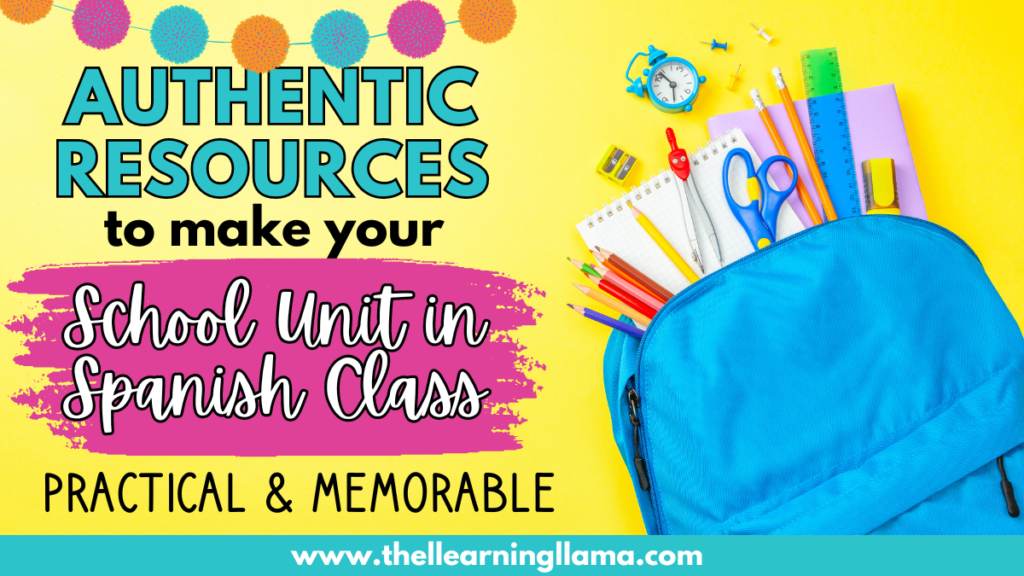In every Spanish curriculum, you will find a school unit… teaching about classes, teachers, prepositions of place, and more. But, aside from teaching the traditional school vocabulary in a unit on “la escuela,” we want to provide our students with authentic resources that show what school is like around the world.
With this comprehensive list of authentic resources for a school unit, you’ll find things like routes to school around the world, school schedules, advertisements, uniforms and more! These resources are guaranteed to make your school unit more engaging and practical for your students.
School Around the World
Going to school in the United States can be vastly different from a school in another country. Use your school unit as a cultural awareness lesson. Showcase what schools are like around the world and then do a cultural comparison. With this type of comparison, students must first be aware of their own culture, school, educational values, and more. So, spend some time first on school vocab and describing their own schedule, lunches, classes, etc. before introducing other cultures.
Routes to School
Most of your students probably take the bus or get dropped off to school. But what about students around the world? How do they get to school? With this lesson, students experience the different, oftentimes dangerous routes to school around the world. Using their five senses and comprehensible input, even novice learners can enjoy this fun cultural comparison lesson.
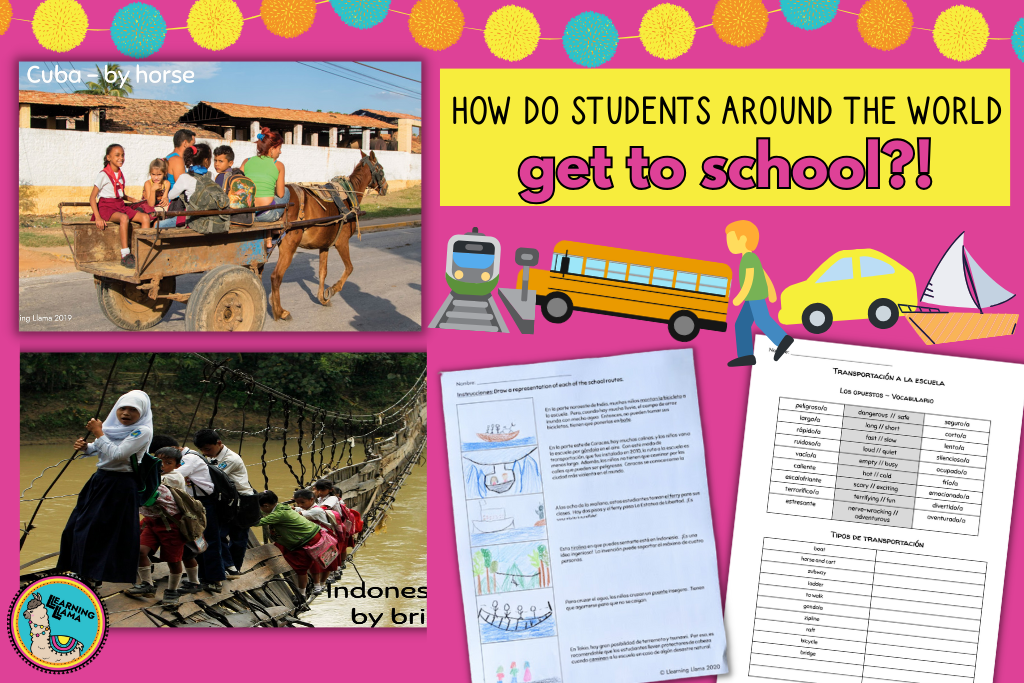
School Lunches
Additionally, not all students’ lunches look the same around the world. Chicken nuggets, macaroni and cheese, french fries, and cookies are not the traditional lunch in other countries. Here are some resources for school lunches around the world.
- Mi Plato – a cultural comparison of breakfast, school lunch, and dinner in the USA, Peru, and Guatemala. This lesson also ties into healthy foods!
- This is a YouTube video of a Mexican student giving 3 tips for packing a school lunch.
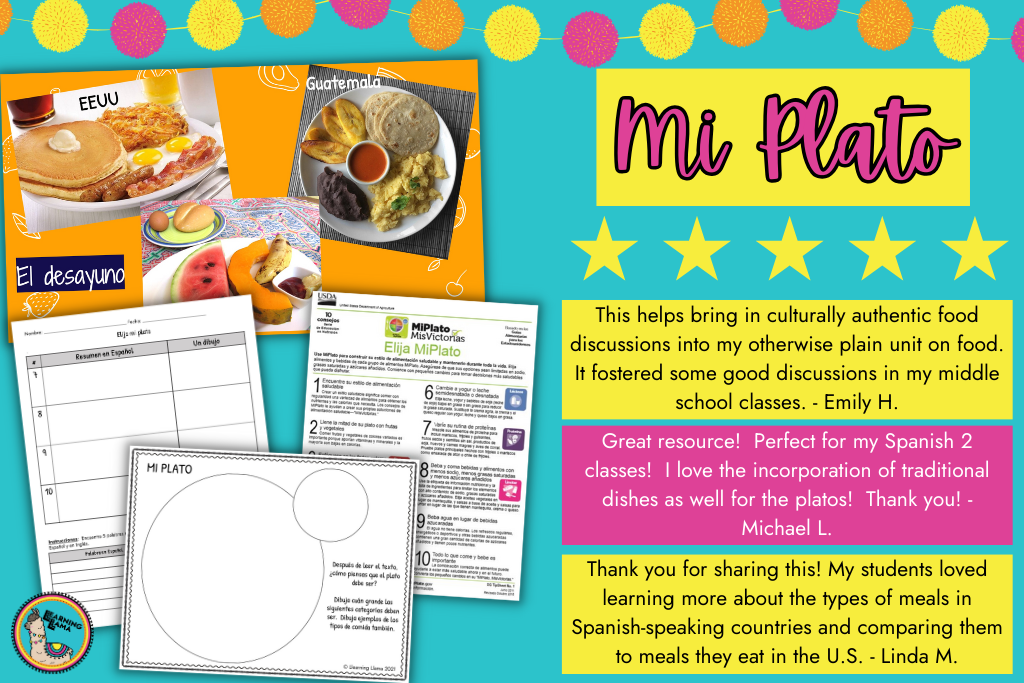
School Schedules for a School Unit
- Academic Calendars from Mexico and La República Dominicana – Use these to compare the start and end dates and vacation times to your own district’s academic calendar.
- Secondary School Schedule from Colegio Bruning Chiclayo in Peru
- As a proficiency-based assessment, use this Integrated Performance Assessment that includes an authentic school schedule. Novice Low students will interpret it, compare schedules, and write about their own schedule!
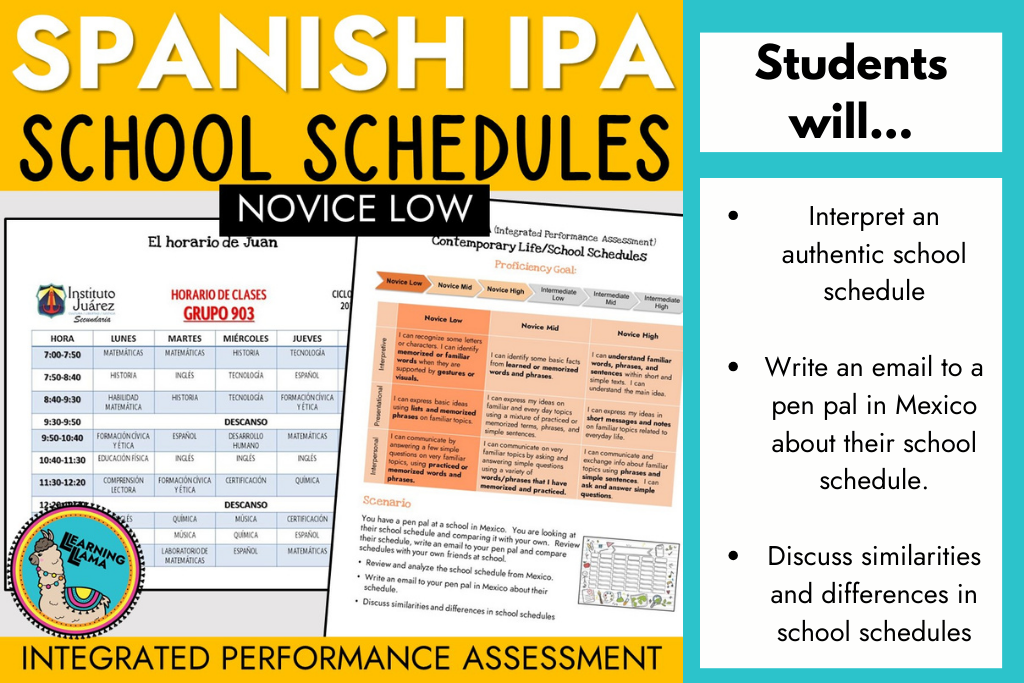
School Supplies
- The Gobierno de Mexico website has a school supply list for various grades. Have your students turn this into an infographic to make it more visually appealing for students. They will find the images that best reflect the text on the school supply list, showing you they understand what it says. Learn how to use infographics here.
- Have students use another school supply list from Colegio Maria de Fatima to do their school shopping. I recommend an authentic Spanish website like El Corte Inglés or Pepe Ganga. Students will use one of those sites to complete an online scavenger hunt and can screenshot products they will buy or provide links.
- Read and interpret flyers or advertisements for Back to School supplies and make a list of how much you would spend based on the prices.
- Flyer #1 and flyer #2 from Pepe Ganga Puerto Rico
- Video Ad – El Super Barato 2016
- Video Ad – El Machetazo Panamá
- Video Ad – Giveaway giving away 60 backpacks
- Video – ¿Cuánto cuestan las materias escolares en Colombia?
- In my La Escuela escape room for Novice High students, I use a flyer advertisement like the ones above. It is a fun puzzle to solve as students use an authentic flyer to calculate the costs of the school supply list for the family.
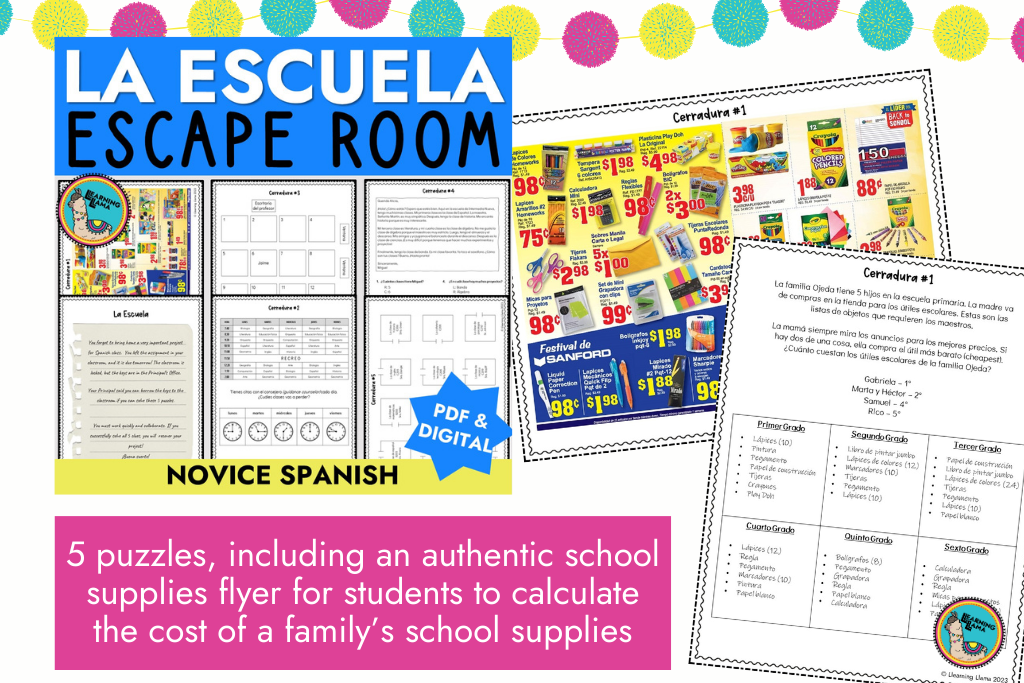
Recommendations and Advice for Students in a School Unit
- Here is a great YouTube video that is comprehensible and even has text appear on the screen to help students better understand. Students can listen to the advice for the first day of school and then share other tips they have.
- “David va a la escuela” is the Spanish translation of the popular book “David Goes to School.” It is filled with negative commands about what NOT to do in school, like “No grits, no empujes, no corras, etc.” I used this book when teaching commands to middle school students. They all wrote their own mini books about how to be good students after we read about David’s school adventures.
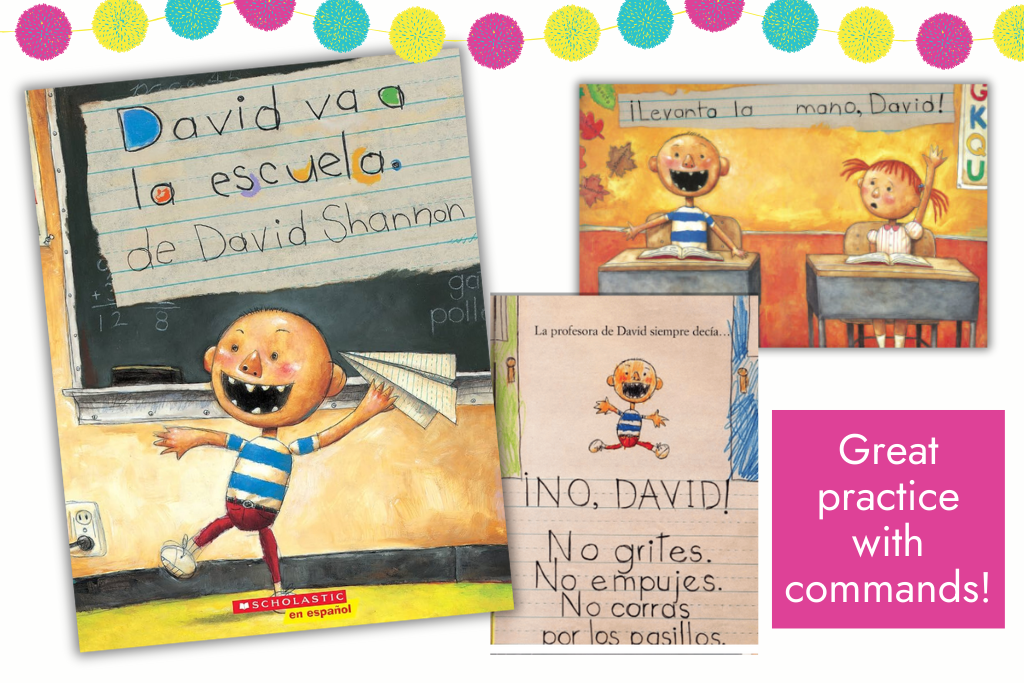
School Uniforms
Most schools do not require uniforms, but there are some that do! This can spark a lively debate in your classes during a school unit. Here are some great resources:
- Video #1 and Video #2 of school uniforms in Cuba
- Go shopping for school uniforms using Mercado Libre. Give students a list of what they need to purchase and see what they can find.
- Have a debate on the pros and cons of uniforms. This article has a lot of useful information, but specifically an easy-to-digest infographic highlighting three reasons for and three reasons against uniforms.
Survey of School Topics
You can use any of these authentic videos and infographics as a starting point for students. Listen and interpret the videos or infographics. Then, students can survey their classmates. When they do this, they can write questions, have conversations, record responses in a bar graph, and write sentences in the 3rd person.
What is your favorite subject?
Listen as members of the Selección Nacional de México soccer team share their favorite subjects. Students can keep track of the subjects they hear in the video and then after surveying their classmates, compare the results.
Here are three other videos of people being interviewed about their favorite subjects. The reason I love these videos is that the answers come from native speakers, so we hear a variety of accents. Plus, they are brief answers and our students can comprehend them! Video #1; Video #2, and Video #3
Or use this chart to see what subjects are most liked around the world. Many countries are included, and some two Spanish-speaking countries (Argentina and Spain) make the list, too!
I hope you and your students enjoy these authentic resources for a school unit. Having authentic resources can make lessons more enjoyable, practical, and engaging!

